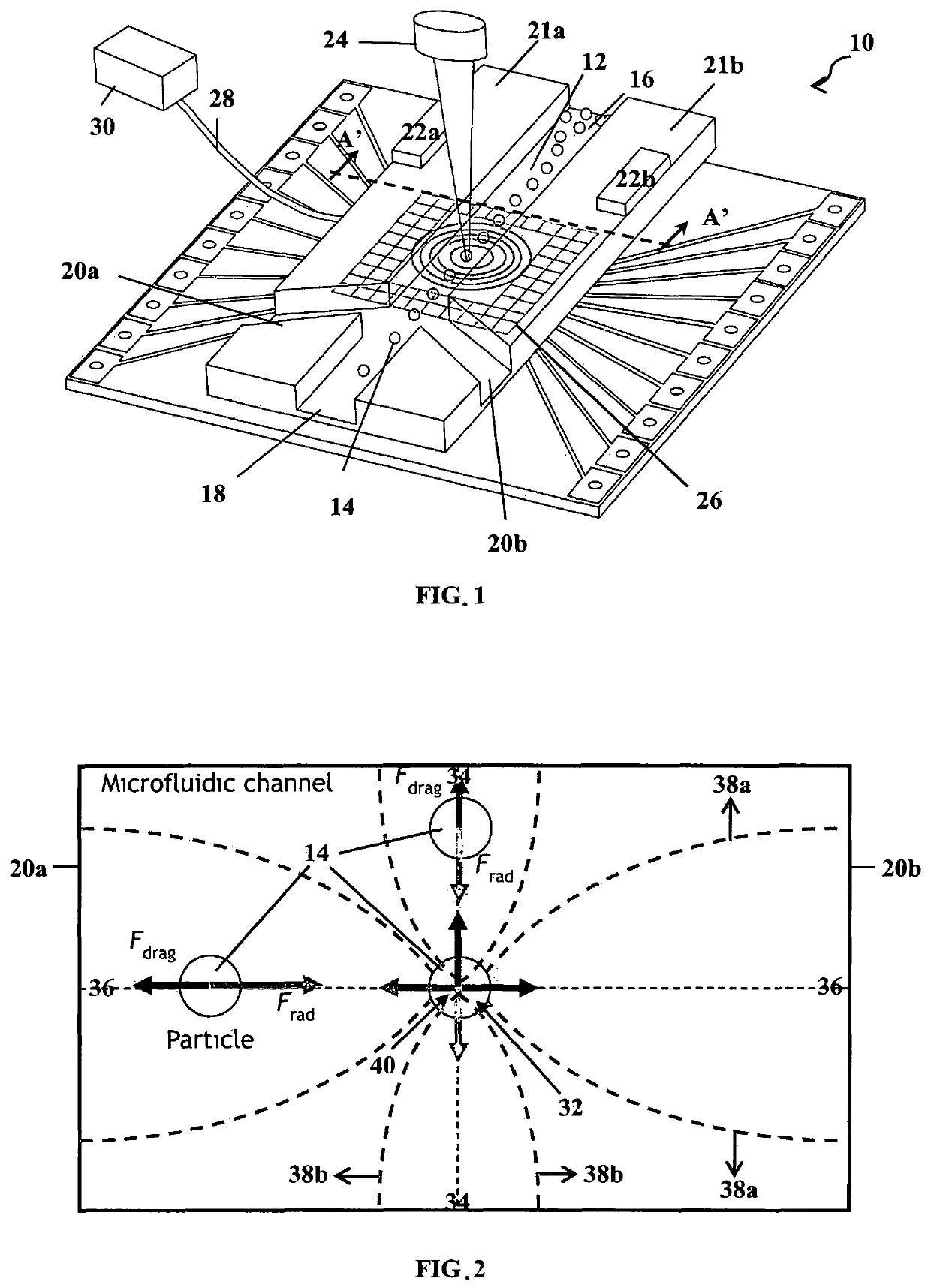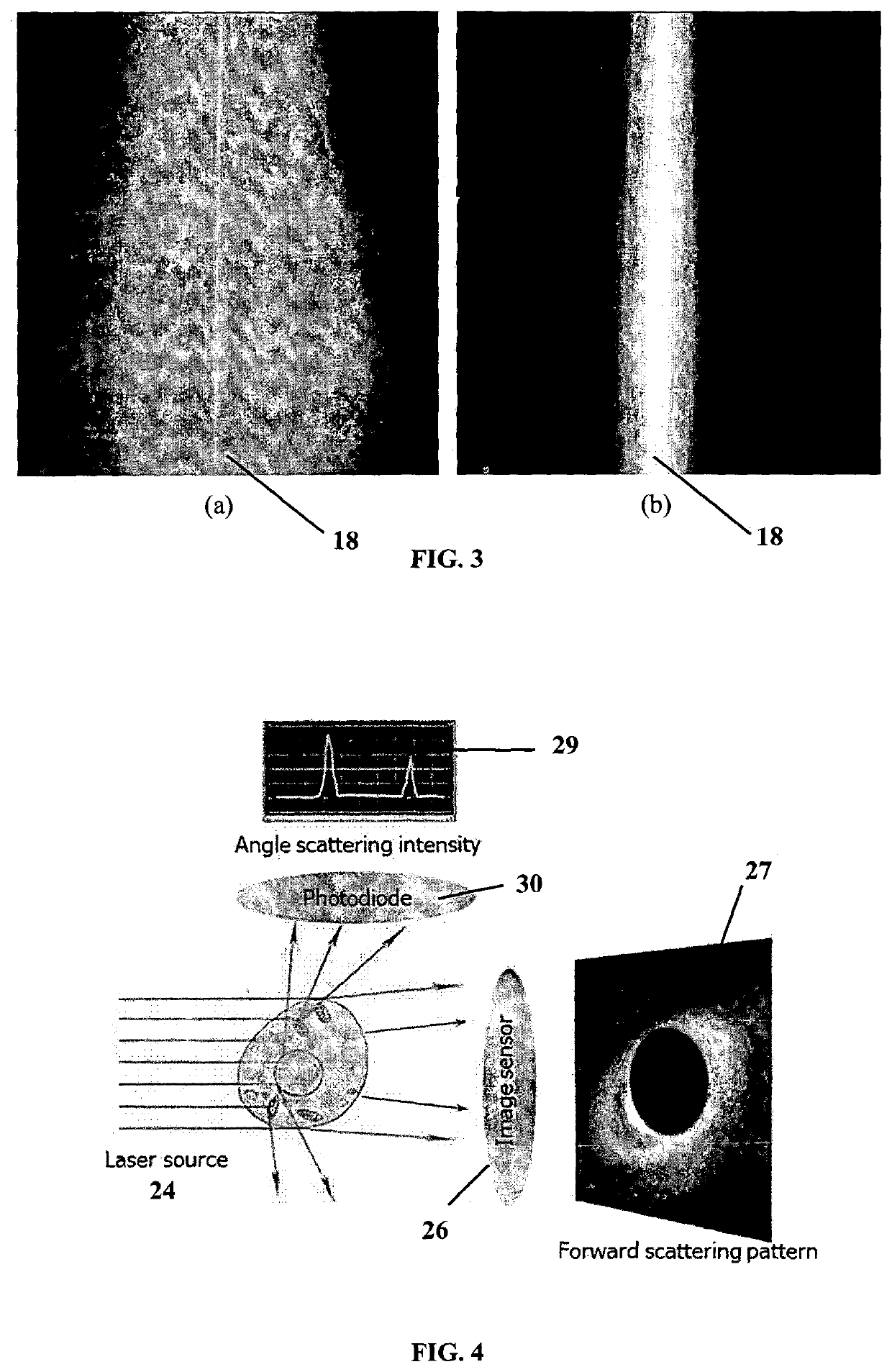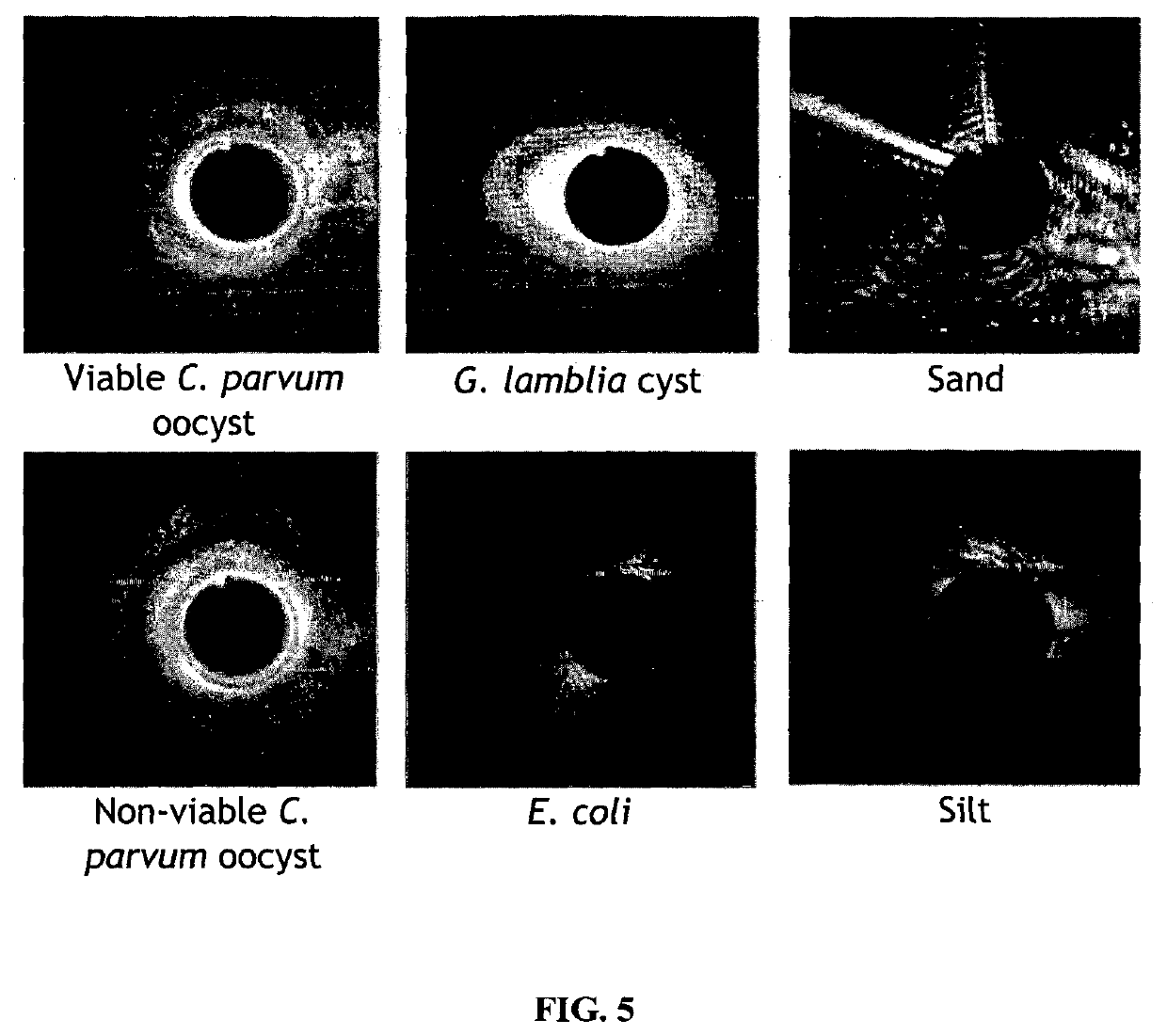Sensor for particle detection in a fluid
a technology of particle detection and sensor, which is applied in the direction of fluid analysis using sonic/ultrasonic/infrasonic waves, biochemistry apparatus and processes, and material testing goods, etc. it can solve the problems of long processing time, high cost, and intrinsic limits of conventional microbiological laboratory methods, and achieve the effect of optimizing characterization or classification accuracy
- Summary
- Abstract
- Description
- Claims
- Application Information
AI Technical Summary
Benefits of technology
Problems solved by technology
Method used
Image
Examples
Embodiment Construction
[0070]The following detailed description refers to the accompanying drawings that show, by way of illustration, specific details and embodiments in which the invention may be practiced. These embodiments are described in sufficient detail to enable those skilled in the art to practice the invention. Other embodiments may be utilized and structural changes may be made without departing from the scope of the invention. The various embodiments are not necessarily mutually exclusive, as some embodiments can be combined with one or more other embodiments to form new embodiments.
[0071]FIG. 1 is a schematic diagram of a sensor for detecting microorganism particles in a fluid. In this particular example, the sensor 10 is adapted to detect waterborne pathogens in water. The optofluidic sensor 10 has a microfluidic channel 12 configured to allow a water sample containing microorganism particles 14 to flow through. The microfluidic channel has an inlet 16 for receiving the water sample and a m...
PUM
| Property | Measurement | Unit |
|---|---|---|
| volume | aaaaa | aaaaa |
| time | aaaaa | aaaaa |
| angles | aaaaa | aaaaa |
Abstract
Description
Claims
Application Information
 Login to View More
Login to View More - R&D
- Intellectual Property
- Life Sciences
- Materials
- Tech Scout
- Unparalleled Data Quality
- Higher Quality Content
- 60% Fewer Hallucinations
Browse by: Latest US Patents, China's latest patents, Technical Efficacy Thesaurus, Application Domain, Technology Topic, Popular Technical Reports.
© 2025 PatSnap. All rights reserved.Legal|Privacy policy|Modern Slavery Act Transparency Statement|Sitemap|About US| Contact US: help@patsnap.com



